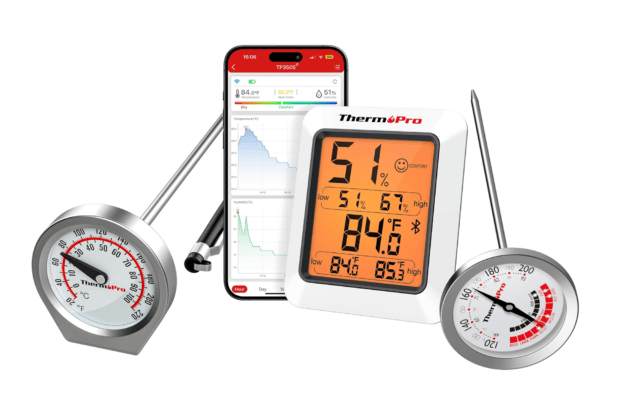Table of Contents
There is so much concern regarding the current outbreak of the novel coronavirus. Having a fever is the most potential symptom of Coronavirus. so, early on, authorities were checking passengers’ body temperature by medical thermometers at the airports. Those who showed they had fever will be treated as a suspected case and kept from boarding airplanes.
However, the variety of coronavirus symptoms are similar to both common cold and flu. This is why everyone is in self-quarantine right now. While checking if you have a fever is not the only way to determine if someone may have coronavirus, it helps to understand more about how to treat a fever at home in the period of the coronavirus outbreak.
Common Symptoms of Coronavirus
It is useful to know that there are several symptoms commonly occurring with coronavirus. These main symptoms include the following:
- Fever
- Lethargy
- Fatigue
- Dry cough
- Shortness of breath
Compared to the flu, which has symptoms of fever, cough, sore throat, runny nose or sinus congestion, muscle or body aches, headache and fatigue, coronavirus lacks a few of these. Severe cases can advance to pneumonia rapidly. One common comparison is that most people who get coronavirus experience mild symptoms.
Other more severe symptoms of coronavirus include difficulty breathing and persistent chest pain or pressure about the chest. People may also feel confused, unable to arouse or appear blue in the face or the lips. This is due to the lack of oxygen in the bloodstream from the effect of the disease on the lungs. These would be symptoms requiring immediate medical attention.
With a cold, people experience fever, body aches, coughing and sneezing. Even though these tend to differ with coronavirus, people may experience similar symptoms. It is difficult to discern the differences with certainty, especially when there is flu going around at the same time. For this reason, it is worth the effort to get tested to determine if you are positive for the coronavirus.
Common among all three of these illnesses is the presence of a fever. To help figure out how to treat the fever, read on to understand their different extremes.
What’s the Difference Between Normal Fever and Viral Fever?
Most people have a normal body temperature of 98.6 degrees Fahrenheit. Fever occurs with an elevation of the body temperature. Anything registering one degree or higher than the normal temperature is considered a fever. Your body temperature may vary up to 1 degree throughout a day.
Generally, fever is beneficial to help fight off infection-causing no problems as it is typically self-limited. This is the body’s immune response against foreign invaders. Such foreign invasions can be either or both natural or artificial as in the cases of bacteria, viruses, fungi, drugs and other toxic elements.
Viral fever is due to a viral infection. This is what we are experiencing with coronavirus and why it is important to notice as these tiny microbes are easily spread from person to person. More concerning is the fact that we may be contagious before we ever experience any of the symptoms no matter how mild or severe they may be. This is also why the United States has mandated that everyone remain at least 6-feet apart for the time being.
With a viral condition, the body’s immune response goes into overdrive elevating the temperature making it less comfortable for the illness to thrive. This is also what makes it uncomfortable for the person experiencing the fever. The main difference between bacterial and viral infections is that viruses do not respond to antibiotics. They tend to run their course while people make their best effort to treat the symptoms.
Fevers can become as risky as they climb. Adults should seek medical attention for a fever of 103 or higher that does not respond to remedies or lasts longer than three days. You should also seek treatment if the following symptoms occur:
- Severe headache
- Rash
- Light sensitivity
- Chest pain
- Difficulty breathing
- Abdominal pain
- Frequent vomiting
- Stiff neck
- Convulsion or seizure
A fever occurring with people who are immune-compromised can be life-threatening. We are finding that coronavirus is particularly dangerous for those who are elderly with an underlying condition that has affected their immune system. These are the people receiving the most attention during this outbreak since it is known they are the most susceptible to their symptoms growing severe.
How to Treat Fever at Home in the period of the Coronavirus Outbreak?
If you have a fever and you are concerned that you might have coronavirus, you need to make a self-assessment first.
- Have you traveled to the coronavirus outbreak countries or area in the last 14 days?
- Has someone you are in close contact with tested positive for COVID-19?
- Are you in close contact with a person who is sick with new respiratory symptoms or who recently traveled to the coronavirus outbreak countries or area?
If any answer to the questions above is yes, please contact the related organization to apply for a COVID-19 test.
But if the answers are not, and please confirm also if you are experiencing any of the other associated symptoms of tiredness, shortness of breath and dry cough. Allergies can bring on chronic sneezing, coughing or wheezing. The flu can produce body aches but typically does not cause shortness of breath. A runny nose or itchy eyes is not a sign of coronavirus.
Being short of breath is one of the telltale signs of coronavirus often occurring 5 to 10 days after the first sign of fever, which can be the precursor to pneumonia. Unless the flu has developed to that stage, it generally does not cause shortness of breath. You may want to contact your healthcare provider to take a test to see if you are positive for coronavirus. If your test is negative, there are ways to reduce a fever at home.
Individuals experiencing fever may be more comfortable with less clothing as overdressing may only cause their temperature to go higher. A water bath is fine as a home remedy if you maintain it at a tepid 85 degrees. You want to avoid ice water baths. This misconception causes shivering, which only makes the body temperature climb in response. Sponge baths are fine if you avoid using alcohol as inhaling the fumes causes other problems.
Ensure the person with fever remains hydrated avoiding alcohol or caffeine as both can contribute to dehydration. Using a fan to circulate air or opening a window is also helpful as is applying a cool damp cloth to the forehead. It is important to help prevent the person from becoming too cold.
Ways to Treat Normal Fever
Fever need not be treated if it does not cause discomfort. There are OTC fever-reducing medicines that are most often used at home including:
- Acetaminophen, such as Tylenol, following the recommended dosage.
For children, rely on the pediatrician’s recommended dosage. For adults who do not have liver disease or other health issues, they can take up to 1,000 mg every six hours, the equivalent of two extra-strength tablets. The makers of Tylenol advise against exceeding 3,000 mg per day, the equivalent of six extra-strength tablets in a 24-hour period. - Ibuprofen, such as Motrin or Advil.
Ibuprofen can be used to break the fever for those over the age of 6-months. Adults can generally take 400 mg to 600 mg, equivalent to 2-3 200 mg tablets, every six hours. It is best to discuss the proper dose with your doctor to reduce fever. - Naproxen, such as Aleve.
Naproxen is an NSAID, a nonsteroidal, anti-inflammatory drug. A dosage of two tablets every 12 hours can temporarily reduce fever. - Aspirin
Aspirin is not recommended for fever in children or teens. Aspirin use at these ages with a viral illness has been known to cause Reye’s syndrome, a dangerous illness causing serious complications of confusion, vomiting and may even be as severe as to cause coma and liver failure. While some can tolerate aspirin without any issues, others are susceptible to stomach irritation that can progress to ulcers with continued use. Use aspirin with caution, and if you have any concerns, consult your physician.
How to Monitor Body Fever Temperature at Home
Monitoring body fever temperature at home is quick and efficient with the use of the ThermoPro ear thermometer. It is a hi-tech infrared sensor that gives you results with minimal contact, which makes things so much easier when it comes to taking temperatures of kids, toddlers and babies.
The digital thermometer can recall the last 20 readings for parents needing to track the progress of changes in their child’s body temperature. It is also designed with a fever indicator specifically for when a body temperature reading has exceeded 100.4. The ThermoPro alerts with continuous soft beeps including a red backlight. This is helpful to inform needed action that must be taken.
Another favorable feature of the ThermoPro digital ear thermometer is the mute function. When your child is sleeping is the best way for the body to work through a fever. With the mute button, it allows you to take the temperature without disrupting your sleeping child.

There are four ways to take the temperature with the ThermoPro digital thermometer:
- Forehead – simply swipe from left to right maintaining contact with the forehead
- Ear – aim at the eardrum, most suitable for babies aged 6-months or older
- Objects – point the probe toward whatever object you want to measure at a distance of between 3 to 5mm
- Ambient – simply point at the air to get the ambient temperature
Fevers come and go often without notice. Fevers may also become more serious depending on the reason for them. It is important to be able to measure the body temperature to have first knowledge of how to respond. Quick response when appropriate can help the individual with a fever avoid further health complications and dangers.
Purchasing a ThermoPro Digital Ear Thermometer provides a most useful tool to get the results you need accurately and quickly. With proper action, whether seeking medical treatment or attending to the fever at home, it is possible to respond to fever in a way the reduces the discomfort and potential dangers associated with a high fever.




















